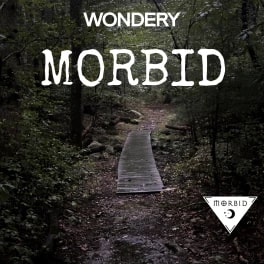

This article is an excerpt from the Shortform guide to "Morbid: A True Crime Podcast". Shortform has the world's best summaries and analyses of books, podcasts, and more.
Like this article? Sign up for a free trial here.
Was the Axeman American Horror Story references real? What was the true story?
The Axeman that American Horror Story mentions was a real serial killer who haunted New Orleans in the years 1918-1919. He was well known for a public letter he wrote declaring that any residents who played jazz from their homes would be spared.
For more on this notorious killer, read this retelling of a segment of Morbid: A True Crime Podcast.
Was the Axeman Real?
Some may not know that the Axeman American Horror Story references was actually a real serial killer. In the early 20th century, New Orleans was a vibrant city with a rich cultural atmosphere. However, during this time, the community was also grappling with the aftermath of World War I and the devastating Spanish flu pandemic. It is within this historical context that the Axeman of New Orleans emerged as an enigmatic figure. Operating from May 1918 to October 1919, this unidentified serial killer targeted Italian immigrants and Italian-Americans in brutal attacks using axes or straight razors. The Axeman’s modus operandi involved removing a panel on the back door of his victims’ homes before launching his deadly assaults.
One particularly notable response came in the form of music—specifically jazz music—which played a significant role in New Orleans’ cultural fabric at that time. The citizens embraced jazz as a unifying force against their shared fear, following an open letter purportedly written by the Axeman himself stating that he would spare any household where jazz music was playing on a specific night.
The impact of the Axeman extends beyond his reign of terror in New Orleans. His story has captured cultural fascination and influenced popular culture through references in television shows like “Buffy the Vampire Slayer” and “American Horror Story.”
While there were creative liberties taken in “American Horror Story: Coven,” where the Axeman is reimagined as a jazz saxophonist who ultimately falls victim to a coven of witches, it is based on the events in New Orleans and further accentuates the cultural fascination with this enigmatic figure.
This fascination stems from society’s enduring interest in enigmatic figures and historical crimes that remain unsolved. Furthermore, it raises broader themes such as ethnic discrimination in victim selection and highlights how true crime can shape public perception.
As we delve into this dark chapter of history, it is important to recognize that while many questions remain unanswered about the Axeman’s identity and motivations, his legacy continues to captivate our collective imagination. The ongoing cultural fascination with historical crimes like these suggests that further exploration may occur both within true crime narratives and fictional portrayals in popular culture. As we seek answers about unsolved mysteries like those surrounding the Axeman, we are reminded not only of our shared curiosity but also our desire for justice and closure.

———End of Preview———
Like what you just read? Read the rest of the world's best guides to Morbid: A True Crime Podcast" at Shortform.
Here's what you'll find in our full Morbid: A True Crime Podcast episode summaries:
- Analysis of well-known criminal incidents from the recent past
- Well-researched narratives delivered with empathy for the victims
- Potentially disturbing stories made entertaining with dark humor






